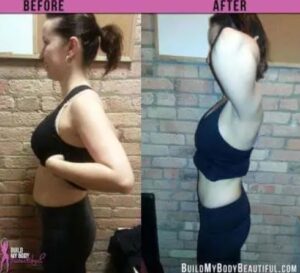Embarking on a workout without a proper warm-up is akin to setting out on a cross-country drive without checking your car’s vitals. Just as our vehicles need that essential prep, our bodies yearn for the preparatory phase to gear up for the physical challenges ahead. Warming up and cooling down aren’t just steps in a routine; they are the vital bookends that ensure the narrative of your workout story remains optimal. As we delve deeper into this guide, the integral nuances of these processes will come to light, revealing their undeniable impact on athletic performance and longevity.
The Science Behind Warming Up and Its Significance
The essence of warming up transcends merely ‘getting ready’. It is about calibrating our bodies for what’s to come. Elevating our body temperature isn’t just about generating warmth; it’s a precursor to better muscle function and reducing the risk of strains or sprains. Furthermore, ensuring that our muscles are limber and ready is just one aspect; the mental game plays a significant role too. A structured warm-up offers a seamless transition from a restful state to one of action, focusing our minds, setting our intentions, and curbing any latent performance anxiety. When the likes of experts like Kayla Itsines emphasize readiness before a grueling session, they are echoing the holistic benefits—both mental and physical—of this essential preparatory step.
Diving into Effective Warm-Up Techniques
The art of warming up is a dynamic dance between preparing the body and igniting the mind. By engaging in deliberate movements and techniques, one lays the groundwork for an effective and injury-free exercise session. Dynamic stretching is central to this process. Unlike static stretches, where one holds a pose, dynamic stretching involves continuous movement, acting as a conduit to elevate heart rates and prepare muscles for what’s ahead. It’s akin to the gentle revving of a car’s engine before a race, ensuring the machinery is primed for performance. Then there’s the invaluable role of aerobic exercises. Think of them as the unsung heroes of a warm-up routine. Simple yet powerful actions, like jump roping or brisk walking, can elevate the heart rate, preparing the body for more intense activities. Tailoring warm-ups to the specific sport or exercise planned is not just smart—it’s essential. After all, a tennis player’s warm-up will differ from a long-distance runner’s, each fine-tuned to the unique demands of their discipline.
The Underestimated Power of Cooling Down
The finale of a concert is just as crucial as the opening act. In the world of fitness, the cool-down phase mirrors this sentiment. It’s the necessary denouement after the climax of the workout. Many might be tempted to skip it, thinking the hard work is over, but this phase holds a power often underestimated. As the heart rate gradually returns to its resting state, the body initiates its natural recovery process. This gradual transition aids in reducing post-workout muscle soreness, a tangible testament to a session well-executed. Moreover, cooling down can be a sanctuary for the muscles, allowing them to relax, elongate, and recover, setting the stage for improved flexibility and reduced injury risk in the future. Jillian Michaels often points to the holistic benefits of post-workout rituals, emphasizing that the journey doesn’t end when the main exercise does; instead, it transitions into a phase of restoration and rejuvenation.
Cool-Down Techniques for a Healthy Wind-Up
As the sun sets, casting a golden hue, nature prepares for a restful night, just as our bodies seek a gentle wind-down after the high-energy demands of a workout. The beauty of an effective cool-down lies in its simplicity. Passive stretching, for example, allows muscles to relax and regain their natural length after they’ve been contracted during exercise. It’s a period of tranquility, where holding stretches gives one the opportunity to connect deeply with one’s body and feel each muscle as it elongates. Then there’s the magic of foam rolling. This technique, much loved by fitness enthusiasts globally, is akin to giving oneself a deep tissue massage. It helps release muscle tightness, aids recovery, and promotes relaxation. Lastly, the role of breathing in cooling down cannot be overstated. Deep, intentional breaths can expedite the return to a resting heart rate, while also centering the mind, paving the way for reflection on the workout and setting intentions for future sessions.
Integrating Warm-Up and Cool-Down into Your Routine
Harmony in a fitness journey is achieved when all its elements are seamlessly integrated. Establishing a consistent practice of warming up and cooling down is not just an enhancement; it’s foundational for long-term athletic success. Kayla Itsines often stresses the idea of consistency in fitness. It’s the non-negotiable glue that binds a routine together, transforming isolated workouts into a cohesive fitness narrative. This consistency, however, should be adaptive. Recognizing the nature and intensity of one’s primary workout, and then tailoring the warm-up and cool-down accordingly, ensures that the body receives the most appropriate preparation and recovery. Consideration of duration is another key element. While there’s no universal golden number, the aim should be a timeframe that sufficiently primes the body for the workout ahead and allows it to recover afterward, typically ranging from 10-15 minutes for each phase. These elements, when synchronized, curate a balanced fitness routine, fostering both performance and wellness.









